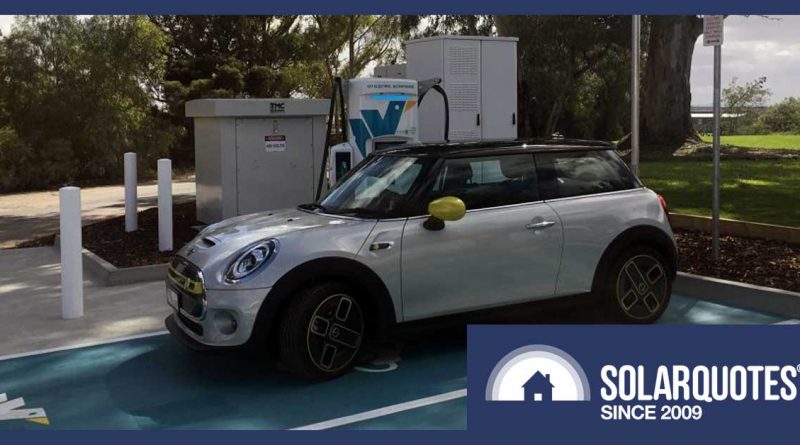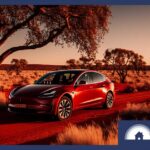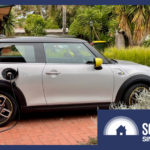The Electric Mini In Australia — Awesome Performance, Lousy Warranty
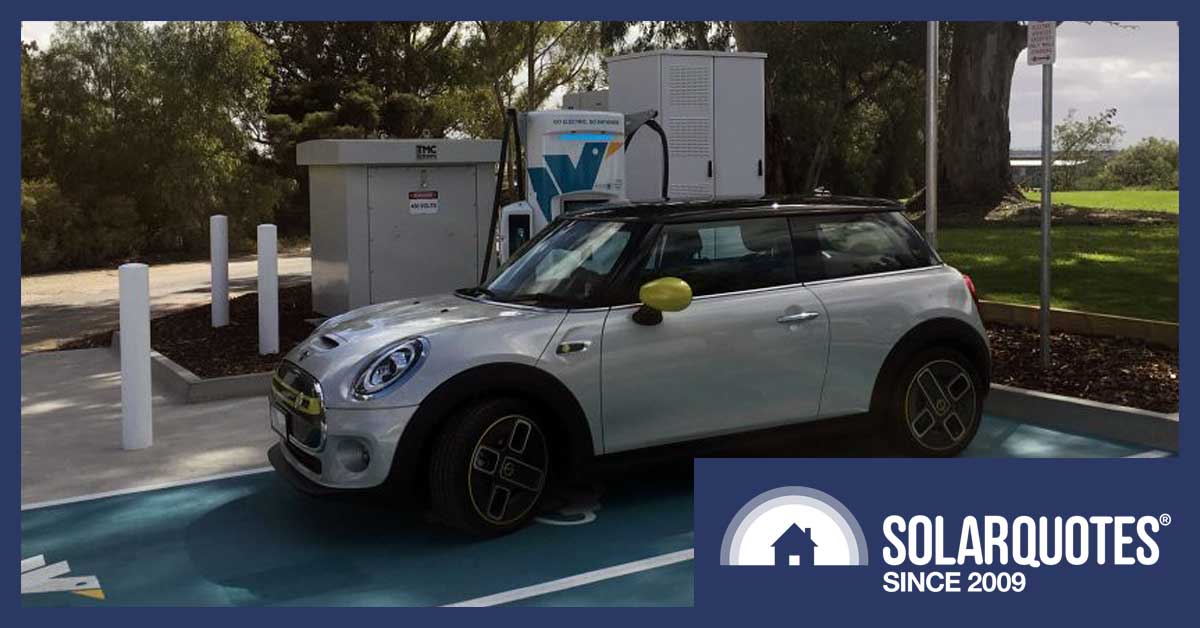
This is the third electric Mini Cooper SE to be sold in Australia and the first in Adelaide. Ronald spent the weekend with it. Here’s what he thought.
For two days last week, I managed to get my hands on an Electric Mini Cooper SE. I tried to take it for a spin, but its traction control wouldn’t let me, so the good news is it’s safe to drive. It was also a lot of fun. While on paper its specs aren’t as impressive as a Tesla, the fact that I could one day afford a Mini EV if I saved my pennies made me appreciate it more — although I was still very worried about wrapping it around a stobie pole despite its lower price.
The Australian Electric Mini site is here and this is their commercial for the car:
The ad shows young people enjoying themselves but the backing track is so old it’s now officially grandpa music. So I don’t know what market segment they are going for. Old people who wish they were young? Or young people with lousy musical taste?
The webpage gives the Electric Mini’s range as 233 km, which is absolute rubbish. There’s no way it will go that far with anything approaching real-world driving. The car itself won’t give you a range estimate that high with a full charge no matter what driving mode you put it in. Until they put a realistic range figure up I’ll assume that Mini Australia is a pack of jackals.
Since you can’t trust them you’ll have to rely on me to tell you about it. This is not an ideal situation, but I’ll do the best I can. The good news is it’s an impressive little car. If it wasn’t I’d be worried because we need to get off oil if we’re going to leave behind a livable planet for our children or other young people we actually like.
My Boss’s New Mini Electric
The Electric Mini I drove belongs to my boss. Not Finn, my other boss, Chantel. I’ve written about driving Finn’s Tesla S and while that was fun, being behind the wheel of a $144,000 car was nerve-wracking. But driving Chantel’s Electric Mini was even more stressful despite being under half the cost.
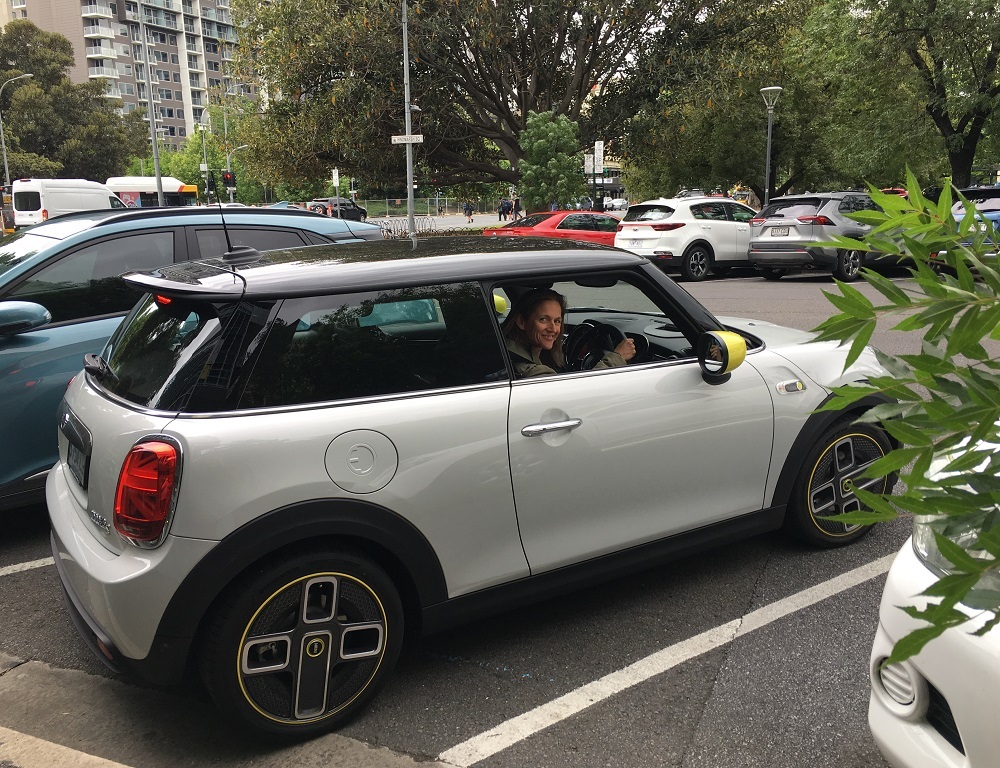
Chantel in her Mini Electric, ready to roll.
This is because if I smashed the Tesla I’d have a chance of surviving if I could make it until nightfall, as Finn gains his power from the sun’s yellow rays. But Chantel runs marathons. She chucks laps around Uluru on foot for fun. In her age bracket, she’s the fastest woman in South Australia over 10 kilometres. If I dinged her car there would be no escape.
If I tried to get away in my Hyundai, every time I filled up, she’d appear in my rear-view mirror as I pulled away, closing the gap each time. She’d be relentless, like a cheerful Terminator. Eventually, I’d be too tired to drive and I’d roll the car into a ditch. It would all be over then. She’d pull me from the wreckage and give me a stern talking to about how she was disappointed in level of care I’d shown her car.
Since that would be a fate worse than death for a sensitive soul like me, I decided I’d either return it without a scratch or I wouldn’t return at all. While I’d aim for the former, if the latter came to pass at least I’d get a free Electric Mini out of it.
Electric Mini History
The original petrol powered Mini began production in Britain in the 50s and Australia in the 70s. Despite being pretty good compared to other small cars at the time, the British automotive industry peaked in 1972 and then went so far down the drain I’m surprised British car parts didn’t emerge from New Zealand toilets. By 2000 things were so bad the Mini brand, along with a heap of other automotive capital from the country that invented the industrial revolution, was sold to BMW for 10 pounds. Note it wasn’t 10 pounds of gold or plutonium. It was just 10 quid. Around $41 in today’s money.
BMW made the first electric Minis back in 2009, a year and a half before Nissan launched the electric Leaf. But only around 650 were made and they were only leased. When testing ended in 2011 they were all taken back and the Electric Minis disappeared until March this year.
But BMW must have learned from the experience as the new Electric Mini is pretty good. It has the same motor as the BMW i3, as well as other features found in that car, but is a substantially different design. For example, instead of a flat battery pack on the underside of the car, its pack extends through the middle of the vehicle with projections at either side at its base that the rear seats are mounted on.
Electric Mini Cooper Specs
Here’s a quick rundown of the Electric Mini Cooper’s specs:
- 0-60 km/h Acceleration time: 3.9 seconds
- 0-100 km/h Acceleration time: 7.3 seconds
- Top Speed: 150 km/h
- Electric Motor Power: 135 kilowatts (181 horsepower)
- Battery pack size: 32.6 kilowatt-hours
- Range: Around 170 kilometres
- Range per kilowatt-hour in battery pack: Approximately 5.5 km
- Overseas Price: Around $47,000 including our GST
- Rip-off Australian Price: Around $60,000 on road
Acceleration: While the 7.3 second acceleration time to 100 km/h isn’t vastly better than the 7.9 seconds of a Toyota Corolla, the 0-60 km/h time is what matters around town and is where Electric Mini shines. It doesn’t have the acceleration of a Tesla but does have better performance around town than any small car I’ve driven.
Top Speed: The top speed is 150 km/h. It could go faster, but it’s electronically limited. This is a safety feature and also helps reduce strain on the battery. My guess is it wouldn’t go much over 170 km/h if it wasn’t limited due to how electric motors work. They can have great acceleration in town but not such a great top speed on the autobahn. Of course, since we don’t have autobahns here this is not really a problem. An electric car with a top speed of 120 km/h should be enough for anyone in Australia who isn’t a speed freak and unlikely to regularly use the 130 km/h highway in the Northern Territory.
Range: The Electric Mini has a 32.6 kilowatt-hour battery pack that gives it around 170 km of range, although this can drop to under 150 km if you drive like an idiot or go heavy on climate control. You can also go a little further if you’re careful. The US EPA gives it a 182 km range, which may be possible, while the Worldwide harmonised Light-duty vehicle Test Procedure or WLTP gives it 195-230 km range which is absolute bollocks for anyone who lives in the real world.
If it has 170 km of range and discharges its battery pack by a maximum of 95%, that means it can travel around 5.5 kilometres per kilowatt-hour of battery charge. This seems a little low to me for a small electric car in 2020, so it is possible they aren’t letting the battery discharge quite that deep.
Price: This Electric Mini Cooper was one the first in Australia and cost $60,000. This is a total rip-off. Overseas it’s only around $47,000 and that’s if I add our GST. While the extra shipping distance may add a little to the cost, it’s clear early adopters are being taken for a ride to the tune of around $10,000. So if you can’t wait to get your hands on an electric Mini you could rush out and get one now…

…but if you wait for the Australian rip-off premium to be removed you could save yourself a lot of money. I’m happy to lend you my bicycle until then.
An 8 Year 160,000 km Battery Warranty
The Electric Mini has a warranty of 3 years. That’s really lousy. I bought my Hyundai 16 years ago and it had a 5-year warranty despite being powered by explosions.
The battery warranty is better at 8 years or 160,000 km. Unfortunately, it’s not clear how much deterioration in range, if any, the warranty allows.
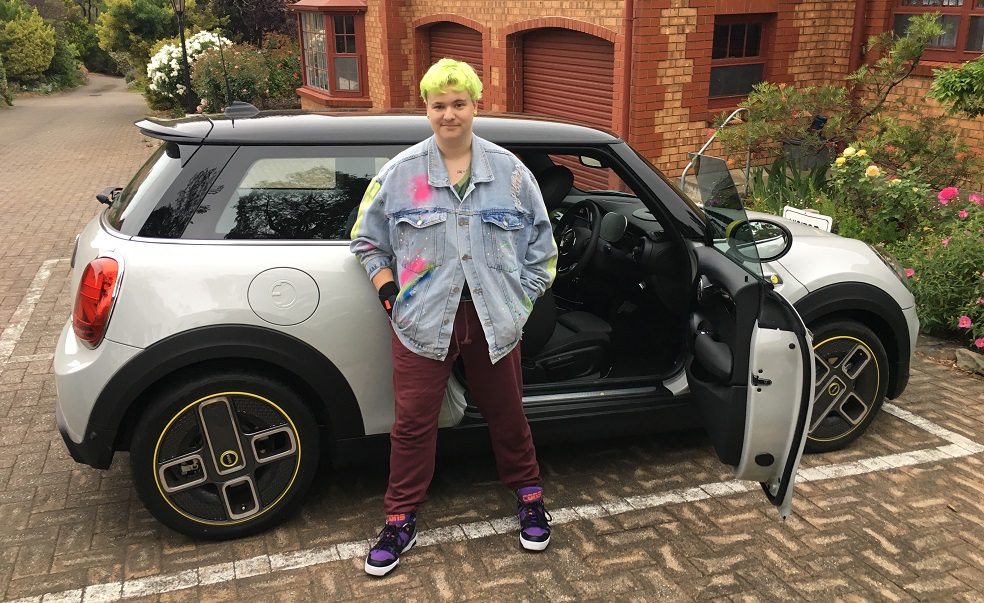
My son going through his rebellious phase. (When I was his age I never would have worn purple sneakers. That is so disrespectful to the Roman Senate.)
A Tesla Plus Electric Mini Family
A range of around 170 kilometres may not seem like much but it’s fine for around town and is about 4.5 hours behind the wheel if you go easy on air conditioning. If your daily commute is more than this you either need to move your job closer to where you live or where you live closer to your job.
With the addition of the Electric Mini, Chantel and Finn are now a two-car family and can take their Tesla with over 400 km of range and the ability to use Tesla Superchargers on long trips. The majority of families have two or more cars and owning one EV with a modest range isn’t a problem. Also, as I’ll demonstrate, the Electric Mini’s range is fine for day trips or weekends away — especially if you have access to a DC fast charger.

My son going through his replacing his face with a cat phase.
Foxcharge Pick Up
On Friday morning we had a meeting with a Chinese solar hardware manufacturer. Sending someone to talk to us face-to-face rather than just having us speak into one of their inverters suggests they’re not spying. Right after that, Finn took me to Chantel’s Electric Mini that was connected to an EV charger at Hindmarsh Square.
It was a Foxcharge charger and topping up the battery cost nothing. This was because — for now at least — if you charge for under an hour it’s free. Finn told me if I wanted to charge longer than that it would accept pretty much any card. I climbed into the car — which was easier to get in and out of than a Tesla S — flicked the switch to start it up and discovered the acceleration was a hell of a lot better than my Hyundai. Despite feeling as though I had the ultimate power in the universe under my right foot I managed to drive Finn around the block without hitting a single person, so he only had good news to report back to Chantel.
I had planned a road trip for the next day, but I couldn’t resist hitting the road, so the first thing I did was go to Ikea to buy an energy-efficient light bulb. I had to take advantage of the opportunity because it might have been my only chance for a long time. After all, if I drove an inefficient, CO2 spewing, petrol-powered car to buy an energy-saving LED bulb I’d just feel stupid.
One Pedal Driving
Like a Tesla, and basically every electric car you’re likely to find in Australia, the Electric Mini cooper has regenerative braking that captures energy from stopping and stores it in the battery or sometimes a supercapacitor to help extend its range. In practice the Mini slows down each time you take your foot off the accelerator and, unless something unexpected happens, you almost never have to use the brakes. This helps the brake pads last a very long time.
You can set the regenerative braking to a lower level so it will act more like a conventional car, but I felt safer with it on high.
Surprising Traction Control
Finn warned me that if you take a corner fast the traction control will activate and ensure the wheels are safely aligned.
While I heard what he said, I didn’t think it applied to me because I happen to know he is a much more “enthusiastic” driver than I am and in my entire life I’ve only had traction control activate on me once before. This was during an emergency brake on a rainy Melbourne day after my rental car was “upgraded” from a Hyundai to a giant Commodore continental siege machine.
So I was driving to Ikea, just seeing how the Mini Electric handles around town, and as I grew more confident I started rounding each corner a little faster than the last to see what it could do. I took a corner a little too fast and the traction control decided I was driving too much like an idiot and its activation gave me a hell of a shock. It felt like the time in Toowoomba when the back seat fell out of my friend’s Celica.1 The car started shuddering and I thought I was going to die. But because I was raised in Toowoomba, feeling death’s icy hand clutching my heart was like meeting an old friend, so I didn’t panic and half a second later it was back to normal. A sibilant voice whispered, “See you next time you decide to toast bread in the bath,” and I was alone again.
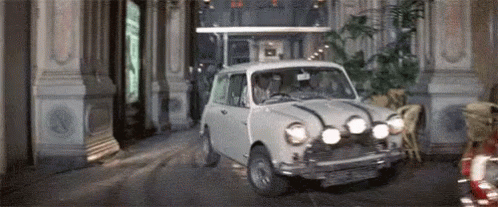
A reenactment of my fast cornering, followed by a quick lunch.
Despite the surprise, I was glad to have the traction control as it increased the chances of getting the car back to Chantel in one piece.
Green+ Mode Gives ~20% More Range
After buying my energy-efficient light bulbs (I got two just in case I don’t get my hands on an electric car again for over 25,000 hours) I started to mess around with the car’s energy efficiency modes:
- Sport: Maximum acceleration but not maximum range
- Mid: This is like sport but with the regenerative braking set at the lower level.
- Green: Reduces acceleration and increases range by around 5%.
- Green+: This reduces acceleration as above and also knocks out most of the climate control. While it will depend on the weather, when I used it the range increased by around 20%.
Switching from sport to green only gives the Mini Electric little boost to range, but I didn’t see any point in not using the green mode because the acceleration was awesome with it on anyway. If you pull up next to a Maserati at the lights and feel the need to drag it, you can switch to sport mode with the flick of a switch. You won’t win, but you might still give the Maserati owner a shock.
The green+ mode can result in a hefty range increase, but this is likely to depend on the weather. If it’s a mild day when little heating or cooling is needed, switching off the climate control will have much less of an effect if it is stinking hot or freezing cold.
Windows Down Vs. Air Conditioning
For conventional cars, the rule of thumb for maximising range on hot days is to drive around town with the windows down but to use air conditioning on the highway because there’s greater air resistance from having the windows down at high speeds. But because EV motors and air conditioners are more energy-efficient I’m not sure what is best for them. If anyone wants to lend me an electric car for hundreds of hours of testing, I’m willing to do the calculations.
Of course, when it’s so hot that driving around with the windows open feels like sitting in a fan-forced oven, pretty much everyone is going to use air conditioning.
Not Being A Dickhead Increases Range
For my first dozen or so kilometres, I was stomping on the Mini Electric’s accelerator a lot. If Chantel asks, this was so I could give a full and complete assessment of how well it performs, but the truth is it was mainly for fun.
As a result of this behaviour, I found that I was chewing through more than one kilometre of the predicted remaining range per kilometre of actual distance I was covering. The car appeared to be taking my lousy driving into account and was reducing how far it thought I’d be able to drive. However, once I stopped driving like a dickhead the range gradually recovered.
There is a visual cue you can use to decrease your dickhead quotient — or increase it if you’re pro-dickhead. The circular dashboard centrepiece glows red when your driving is demonically wasteful and green when you’re an energy-efficient angel.
ChargePoin Has Problems
Unable to resist the lure of the open road, I headed north out of Adelaide and ended up in Gawler.

Gawler will never forget all the Things the Addams Family did for them.
Google Maps said Gawler Council had an EV charger so I went to see if it could provide some power. But their ChargePoin charger didn’t want to work for me and wouldn’t accept any of the cards I waved in front of its sensor, despite having no trouble charging the Nissan Leaf that was already there. Later I looked it up and saw the company in charge is in trouble and they may not work unless you have the specific card they require.
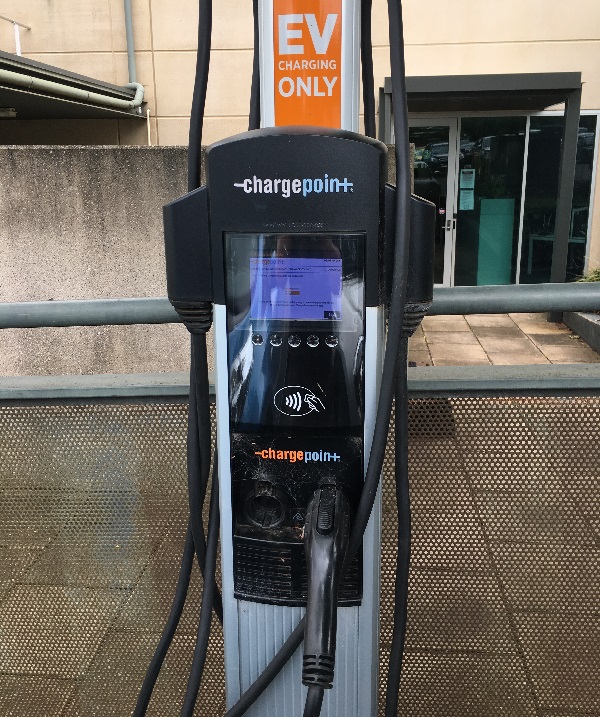
If spiders ever hire you as an architect, you should keep in mind they truly love EV chargers.
I’m not surprised ChargePoin had problems considering they couldn’t even afford to put a “t” on the end of their name.
Getting A Charge From Tesla
Finn told me the Mini can use Tesla destination chargers, so I decided to try one at the Chateau Yaldara winery. But when I got there I found a big sign saying:
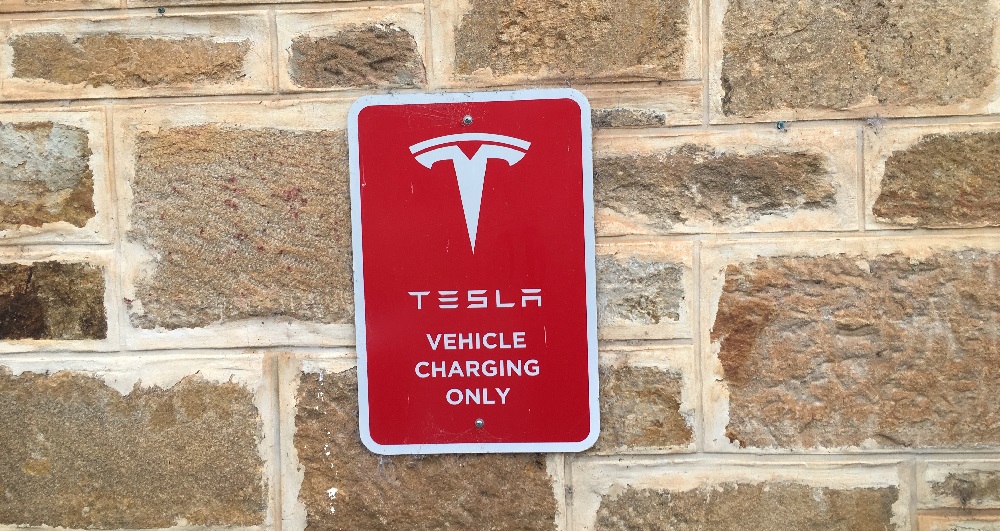
I wonder if Tesla thought this would work because South Australia was the only state without convicts? (Apart from my friends Pigdog and Spider, of course.)
Rather than admit defeat and slink away, I decided to ask if I could use it anyway. After all, it’s the winery’s electricity. They very kindly said that I could. However, I don’t want to get in trouble with Tesla, so keep it under your hat.
While I didn’t need to charge as the Mini still had enough energy to get me back to Adelaide, I decided to find out how fast it would charge here. While I waited I talked to a lady who said her husband brought one of the first Minis to Australia 60 years ago. So he had something in common with Chantel.
After 20 minutes the battery pack had gone from 55% to 64% which was around 15 more kilometres of range provided I minimized driving like a dickhead. That was a little more than I expected and suggests the charger was providing over 8 kilowatts of power. If you were at the winery for lunch and charged for an hour you’d gain close to 50 kilometres range, although it would depend on how flat your battery was when you plugged in.

Chateau Yaldara: It’s like a castle for wine.
Ordinary Power Point Charging
When I got home I threw an extension cord out the window and plugged the Mini Electric into an ordinary powerpoint. According to the car’s readout, it would take 13 hours to go from one-third to fully charged.
That’s means each hour it gains an average of around 1.6 kilowatt-hours of battery charge and around 9 kilometres of range. According to my energy monitor, it was drawing around 1.9 kilowatts, which suggests it was 84% efficient.
Because most people drive their cars under 40 kilometres a day on average, this slow rate of charging is enough for normal use. But I think nearly everyone who buys an electric car will invest in a home charger, as these are faster and hopefully more efficient. A typical one may provide power at around 7 kilowatts but if you have three-phase power they can provide over 20 — although not every electric car at the moment can accept that much.
Mini On The Outside But Biggie On The Inside
After seeing I could charge it from an ordinary powerpoint I drove the car into the Adelaide Hills to perform an important test. Can a mountain of a man fit inside an Electric Mini?
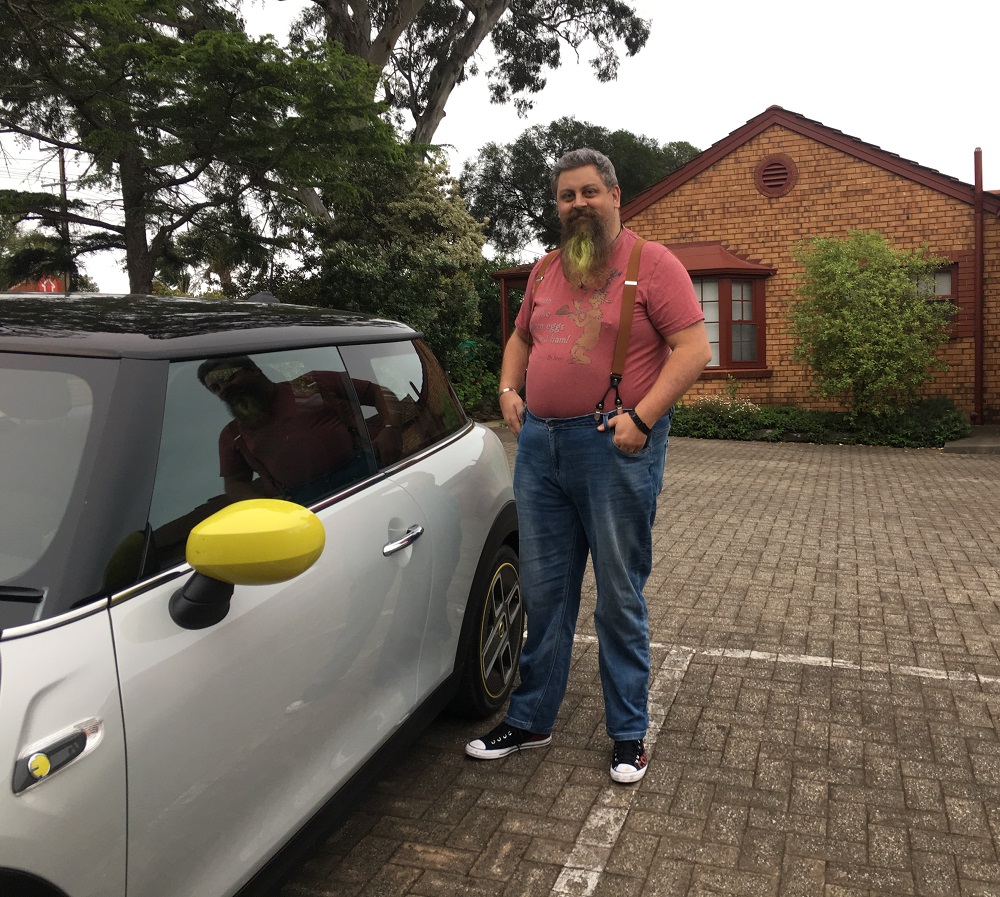
The answer is yes.
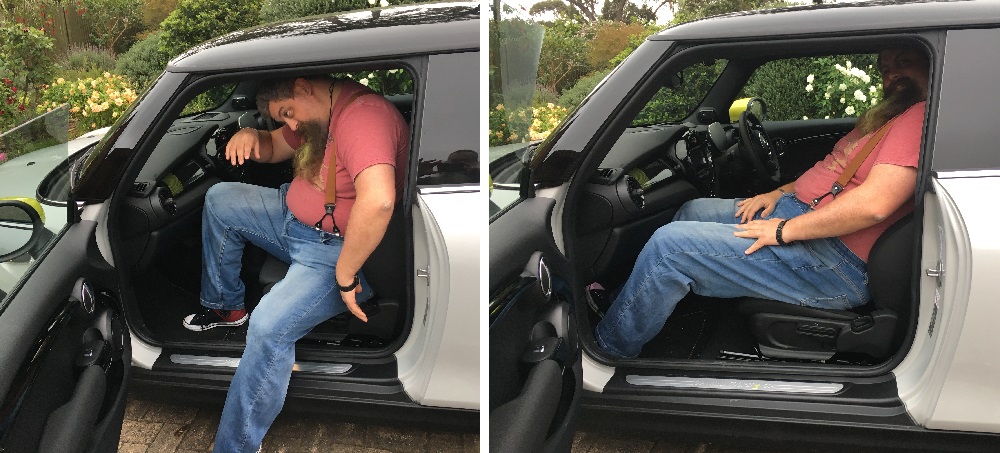
Despite being 6 foot 4 and not quite as slim as some, my friend Sam was able to fit in the front passenger seat and feel quite comfortable. However, my son who was in the back said he felt like a Wookie in a trash compactor when the seat was moved backwards. This was the case even though my short-legged wife gave me short-legged progeny. His mother keeps telling me not to look down on him, but that’s not going to happen until he starts wearing lifts.
While someone Sam’s size will probably prefer a larger car, there’s nothing stopping him from making use of a Mini Cooper.
I Make A Bloody Mess Of Charging
Because I spent so long showing off a car I didn’t own the previous evening, it was only two-thirds charged by the time I woke up in the morning. To quickly get it to 100% I decided to take it back to the Foxcharge EV charger I picked it up from the day before. I didn’t think I’d have a problem as it looked pretty simple to use. Little did I know this decision would end up costing blood, sweat, and earwax.
When I arrived, I backed in and took the charging cable out of the boot. Generally, new EV public chargers have their own cables, but for this one you need to bring your own. I plugged the Mini Electric charging cable in, my card was accepted when I swiped it, and I waited for it to work.
It didn’t.
I unplugged everything and tried again to no avail. Then I tried the plug on the other side of the charger and that didn’t work either. At around the point, I was thinking of swallowing my pride and calling Chantel for help, I noticed there was a large, green, and extremely obvious button that needed to be pressed. I firmly gave it the finger and the car began charging.
I was feeling pleased with myself for finally getting it right but then saw I’d still managed to make a bloody mess of things. Quite literally, as there was blood on the charging cable. Somehow I’d managed to cut myself. I have no idea how. There were no sharp edges on the cable or charging device2 and I don’t know when I did it because I don’t feel pain when concentrating. (This ability isn’t as useful as it sounds, because as soon as I stop concentrating I feel the pain and it distracts me from concentrating again.)

I didn’t take a photo of my injury, so I had it recreated by the best makeup artists in Hollywood. Obviously, I should have gone with the best makeup artists in Adelaide.
A Rogue Punishes My Lousy Parking
The car display said it would be fully charged in just under two hours at 9:05 am, so I staggered away. But when I returned at 9:00 — after treating my injuries — it was already at full, so that was a pleasant surprise.
An unpleasant surprise was the fact I couldn’t get in the car.
Part of the lingo EV drivers have is the word “ICEd.” This is when an Internal Combustion Engine vehicle parks in an EV charging spot. Well, I got EVed. Some rogue parked their electric BMW so close to the Mini I couldn’t open the door. But I must admit I was mostly responsible due to my poor parking. I had planned to improve the park after making sure I could use the charger, but I hadn’t planned on bleeding over everything and being forced to seek treatment before I passed out from losing millilitres of blood.
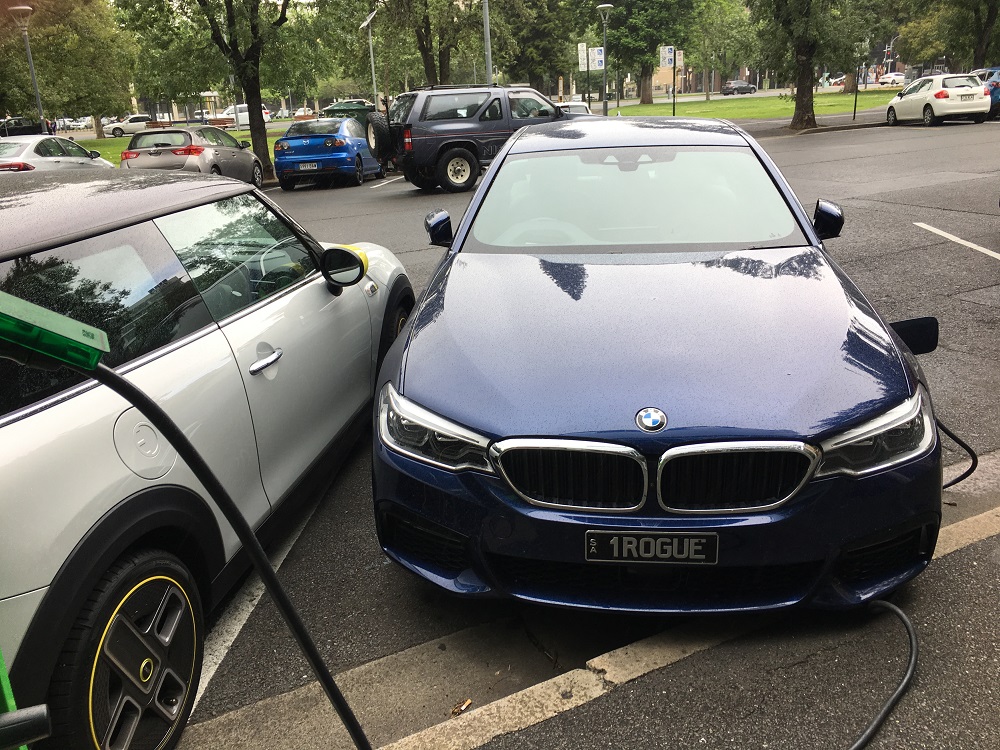
While I only have only myself to blame, I think we need wider parks at chargers or more EVs that charge through the nose.
As I didn’t think the BMW owner would appreciate me dragging it to one side using the strength of my giant abdominal muscles, with no other choice I got in the passenger side of the Mini, took off my shoes, and clambered over into the driver’s seat. Thank god my body is so lithe and athletic it was no inconvenience at all.
$1 For 60 Kilometres
Because the first hour of charging is free, I was worried I’d be hit with a huge fee for charging longer, but it only came to $1. The Mini’s battery pack was two-thirds charged when I plugged in, so taking it to 100% gave me around an extra 60 kilometres range. That’s only 1.7 cents per kilometre.
When I charged from the grid at home overnight it cost me around 6.7 cents per kilometre, assuming 84% efficiency. But when Chantel charges the car at home using solar power and a presumably more efficient home charger, since their solar feed-in tariff is currently 14 cents per kilowatt-hour it would only cost them around 2.8 cents per kilometre of range.
The Vegetarian EV Charger
The battery pack was full of energy and so was I. As I clambered into position I felt my spleen replenish my blood cell count back to it’s normal 40 trillion complement, so I was all ready to go after my not-at-all-significant blood loss. Then my spleen added a couple more cells as it clearly didn’t think I was smart enough not to cut myself again.
I was raring to hit the road as I pulled out of the charging bay. I had a fast car and good looks, so all I needed was a beautiful woman to share them with. But, because I didn’t know any beautiful women, I instead decided to share them with an incredibly beautiful woman.
After picking her up we hit the highway with the intention of heading to Tailem Bend to check out the solar farm there. Because it was over 90 km away, to get back would require finding a way to charge the car. We decided to stop for breakfast in Stirling. As it’s only 20 minutes drive from Adelaide we still had plenty of charge when we arrived. Despite this I went looking for a charger Google Maps said was there.
I found it at the Stirling Organic Market and Cafe. They had a Tesla Destination Charger and a ChargePoin one as well. But the cafe was very busy and, while the space was large enough for the Mini Electric, I don’t think a Tesla would have fit. If you want to charge a Tesla there it might be best to avoid busy times like Saturday morning. Because the Mini still had plenty of range and because I didn’t want to be in anyone’s way, we headed out. The reason we left wasn’t at all because we wanted to consume the flesh of animal food slaves for breakfast. Even though that’s what we did.
Some Chargers Won’t Work
Next stop was Mount Barker where we found this charger…
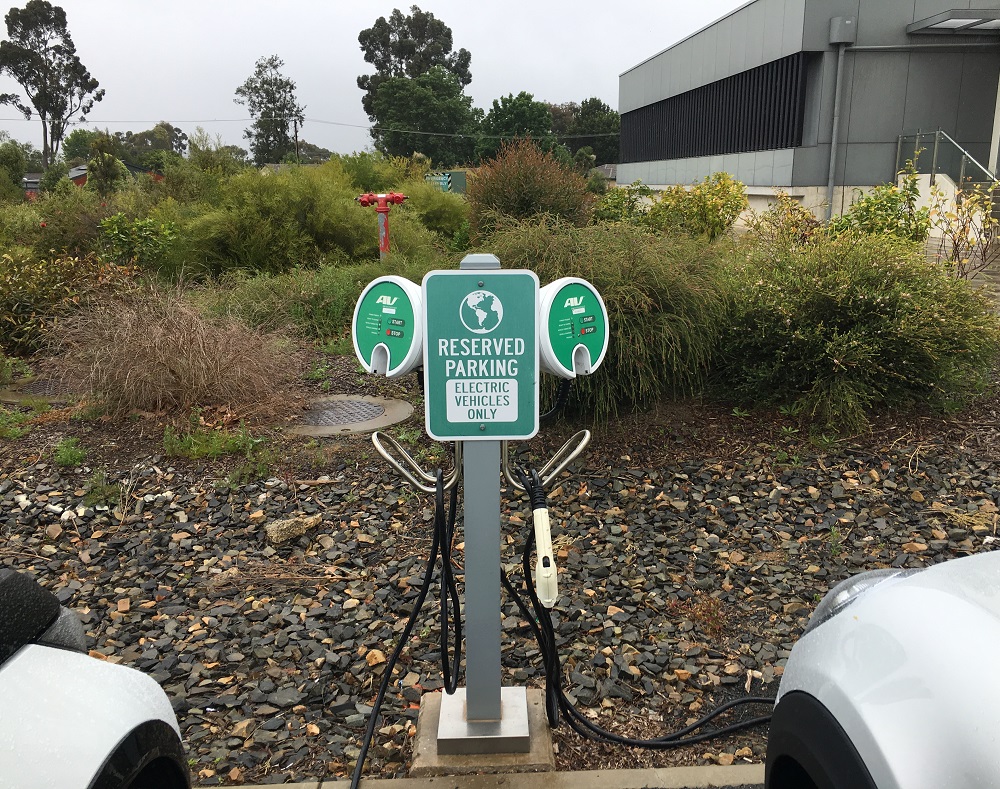
…and discovered the plug didn’t fit the Mini. It was an SAE J1772 connector as in, “SAE, you didn’t really want to charge your car, did you?” Whatever its merits, I think this is the betamax of plugs and will fall by the wayside. Those whose cars require them will be forced to use adapters.
Murray Bridge Gives Power To The People — But Not For Long
In Murray Bridge, there were a pair of big beautiful new RAA chargers behind the shopping centre. Unfortunately, they didn’t accept my card or that of my incredibly beautiful travelling companion. I could apparently download a phone app to use them, but since the internet told me there were other chargers less than 100 metres away at the Murray Bridge Information Centre I headed there and got a free charge for about 40 minutes. They weren’t particularly fast and I only bothered to get enough energy so I could be certain to get back to them if I couldn’t find a suitable charger in Tailem Bend.
But if you want to use these free chargers you’d better hurry…

Tailem Bend — Fast Cars & Faster Photons
When I got to Tailem Bend I headed straight for the raceway:

But they wouldn’t let me on the track. Apparently, they have special days where members of the public can use it and you can’t just turn up and join in any race that happens to be going on. So it’s quite different from Toowoomba’s main street. Stymied, we made our way to the Tailem Bend Solar Farm:
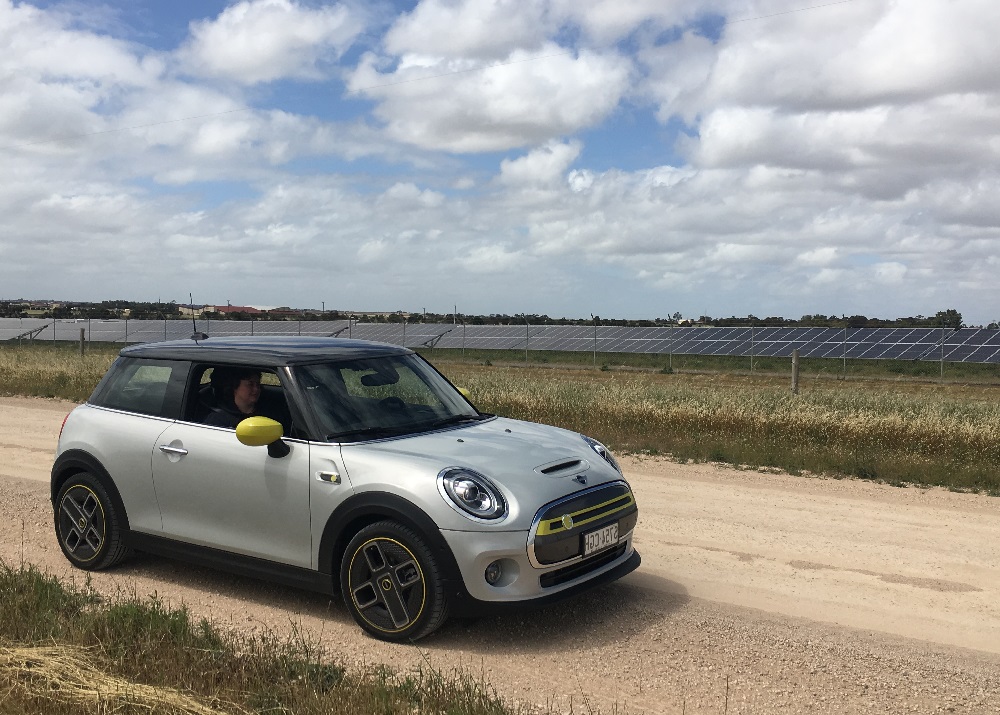
A Good Samaritan Empowers Us
After all this travel I didn’t have enough energy to get back to Adelaide without a charge and neither did the car. I headed for the Tasco Caltex Tailem Bend Roadhouse where Google Maps said I could charge myself and the Mini. There was an Evie brand charger and it looked very impressive but, like the ChargePoin and RAA chargers, this one also wouldn’t accept my card. I tried to download the app onto my phone but it said I had to enter my Apple ID. This made me very confused and I cried…
“How can I do that? I’m not a fruit! I’m made of meat!”
I told the smartphone not to mess with me and threatened to zap it with the charger and send it straight to silicon hell if it didn’t download the app, but it saw through my bluff and refused to comply.
Then fortune smiled on me. The driver of the Tesla Model 3 charging beside us saw me torturing my personal electronics and — rather than calling the men in white coats to come and take me away — he decided to help me out. As soon as his car finished charging he used his phone app to provide power to the Mini. He said to let it charge as long as we liked because it wouldn’t cost him anything as Evie chargers were free until the end of October. That was kind of him and I appreciated the free energy from Evie.
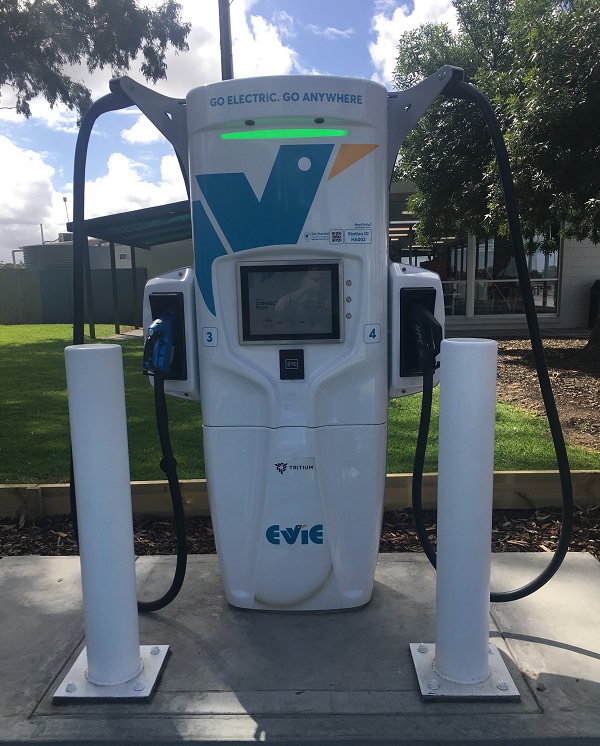
DC Fast Charging Is Awesome
These brand new Evie chargers were opened at the start of October and are able to provide level 2 DC fast charging. They can supply up to 350 kilowatts of power. That’s more than any EV in Australia can currently accept. A car able to take that much would get around 100 km of range in 3 minutes.
I wasn’t expecting a great result because the Mini Electric only has a small battery compared to a Tesla, but when I plugged it in with 37% charge remaining it accepted 45 kilowatts. By the time it got to 84% — less than 25 minutes later — it had slowed down to 29 kilowatts. This was because, just like a smartphone, the flatter the battery the faster it charges.
If my goal hadn’t been to drive around and check out different charging options, the most sensible course of action would have been to download the Evie app before leaving Adelaide and simply charge once very rapidly in Tailem Bend. If I’d done this 20 minutes of charging would have been more than enough to get us home.
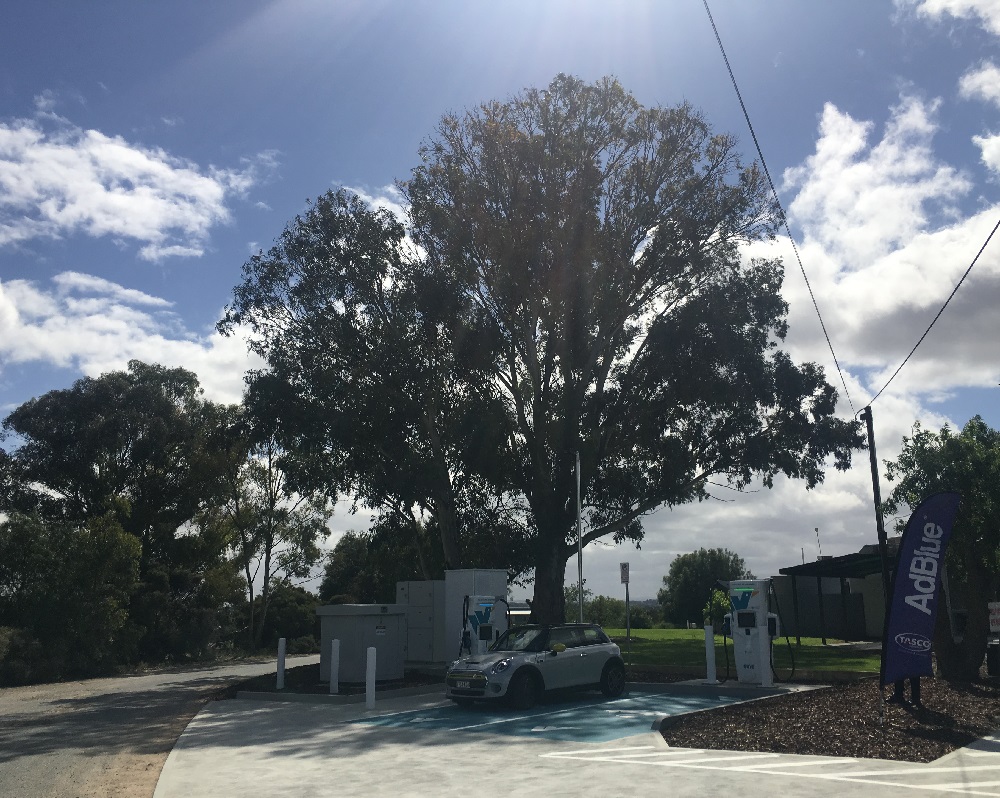
An Electric Mini Is Fine For Day Trips
If you are planning to do a lot of long-distance highway driving, then an electric mini isn’t a great choice. But, as I’ve shown it’s fine for day trips and weekends away, especially if you have access to high power DC fast chargers. I think most single-car families would be able to get by with an Electric Mini or other EV with similar range without major inconvenience. If a sudden need to haul arse out to Alice Springs appears they can always beg, borrow, rent, or steal something with longer range to avoid frequent recharging breaks.
Electric Mini Drawbacks
After arriving back in Adelaide I was faced with a clear moral choice. I could either return the Mini to Chantel and continue with my life as before, or I could steal it and drive into the sunset, forever on the run from the law. It was tempting, but the incredibly beautiful woman said she had a hairdresser’s appointment the next day and so couldn’t come and that took a lot of the shine off it. But what tipped the scales in favour of remaining a law-abiding citizen by Australian standards was the fact the Electric Mini wasn’t quite perfect.
Its interface software is buggy and I didn’t know if outlaws would be able to get updates.
Buggy Software
I’m certain the software the Mini relies on for safety is spot on because Europeans don’t cut corners when it comes to things like that. Unfortunately, the user interface badly needs updating because it’s a buggy mess. Unfortunately, it’s so buggy it can’t update. Clearly, this is something BMW has to get on top of. Maybe they need to send their service people here a thumb drive so they can do it by hand. Chantel still hasn’t received a fix for this weeks after delivery, so I suspect they are just sitting around their offices in Munich and doing it by hand.
I didn’t use the interface much because I had been warned it had problems, but I did use the navigation system. It alternated between speaking softly when giving directions and attempting to deafen me when asking for an address. It understood my voice commands fairly well, although it did have trouble with less Germanic sounding Australian place names. One glaring problem was it didn’t seem to know the location of many charging stations. Something I thought would be at the top of the list of navigational information for an EV.
On the bright side, it’s something that can be fixed with an update. Oh wait — it can’t update.
The Phone App Is Short Range
The phone app for the Electric Mini seems fine except for the fact it only seems to update near the vehicle. As soon as you go out of sight it stops, which makes it useless for checking if your car has finished charging while you’re away from it. Since Chantel runs marathons for fun she is in a habit of walking more than 30 metres away after parking. I’ve even done it myself once or twice. Obviously, the information needs to go to a server so your phone can access it anywhere.
It’s another thing that could be easily fixed — with an update.
It’s Scared Of Grass
The mini has a collision-avoidance system that tells you if you are getting close to hitting something when parking. I found it useful, even though I thought it was a little too cowardly for my taste. I had to keep reassuring it that I still had millimetres to spare. Despite being a bit of a scaredy-cat, it was actually kind of smart as it wouldn’t beep at me if it was absolutely sure I wouldn’t hit something no matter how stupid I was.
But it did seem to think long grass was a dangerous obstacle. Maybe grass in Germany is made out of concrete or maybe it just knew that’s where Australia likes to keep snakes. Either way, it wasn’t a real problem, as I shouldn’t have let even grass come in contact with Chantel’s car.
The Mini can also detect if you need to brake to avoid smacking into a vehicle in front of you and will flash a car symbol on its neat little heads up display. But note it’s not a Tesla, so don’t expect any fancy self-driving tricks like being summoned at the touch of a button.
It Will Be Debuggered
While large companies can be slow to react, I’ve been told BMW has pretty good customer service, so I’m sure they’ll get the bugs out of the user interface software sooner or later — though sooner would be better.
Mini Electric – A Great Little Car
I thought the Electric Mini was a great little car and I can highly recommend it. Or at least I can once we’re charged the same as in other countries. Once that happens it will only be around $5,000 more than a conventional Mini. I’d call that a good deal given it’s high performance, low fuel cost, and zero marginal emissions3 when charged with renewable energy.
If I save my pennies for around 10 years it’s the kind of car I can see myself owning. By that I mean I might be able to afford to buy Chantel’s Mini from her second-hand by then.
I’ll be writing about my experiences with other electric cars in the future, just so long as no one says the words “triple scuba mugger” to Chantel or Finn, as that will override the hypnotic suggestion I implanted and let them see the huge dent I put in the side of the Mini.
Footnotes
- My friend’s Celica wasn’t a ’76 model and it wasn’t a ’74 model. It was both welded together in the middle. A Caboolture chop shop special. When I saw my friend had trouble steering straight I asked him about the car’s alignment and he said it was aligned with the forces of evil.
- Because it was a chad-emo charger you’d think it would cut itself.
- A solar panel or wind turbine can result in greenhouse gas emissions from its manufacture. The way to fix this is to use less fossil fuel.
Original Source: https://www.solarquotes.com.au/blog/mini-electric-review/

